The Center went on an urban foraging tour with Becky Lerner last week. In just a few blocks around Alberta Street in Northeast Portland, we tasted over a dozen edible plants growing freely in alleys and along the street. Here’s a few tasty (and some less tasty) varieties we found:
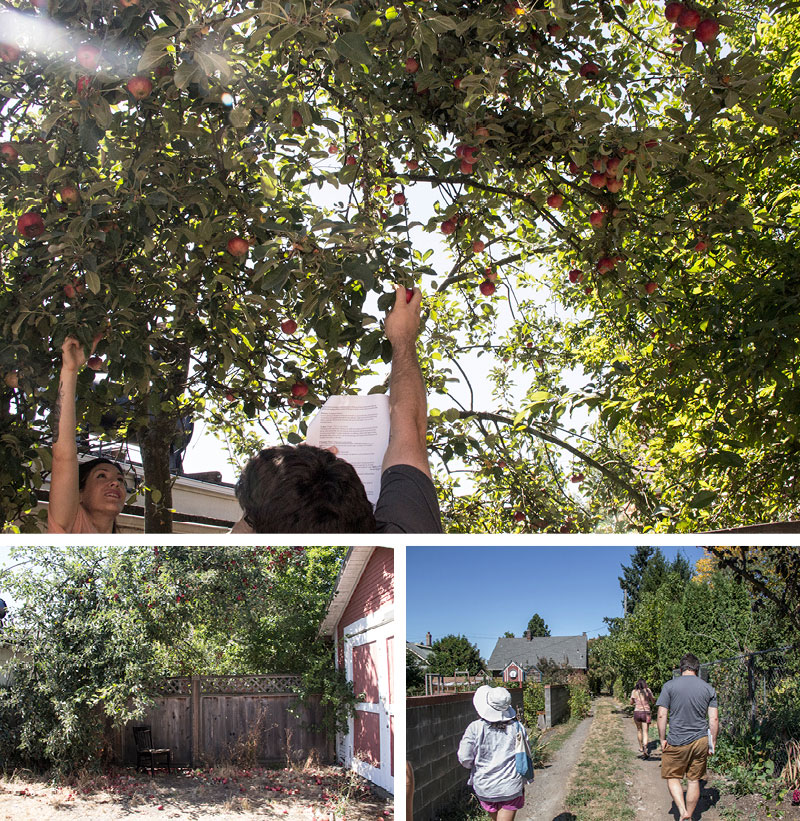
We immediately came across an apple tree with lots of fresh fruit. Becky informed us that her general rule is; if it hangs over into public areas, you can forage from the public side.
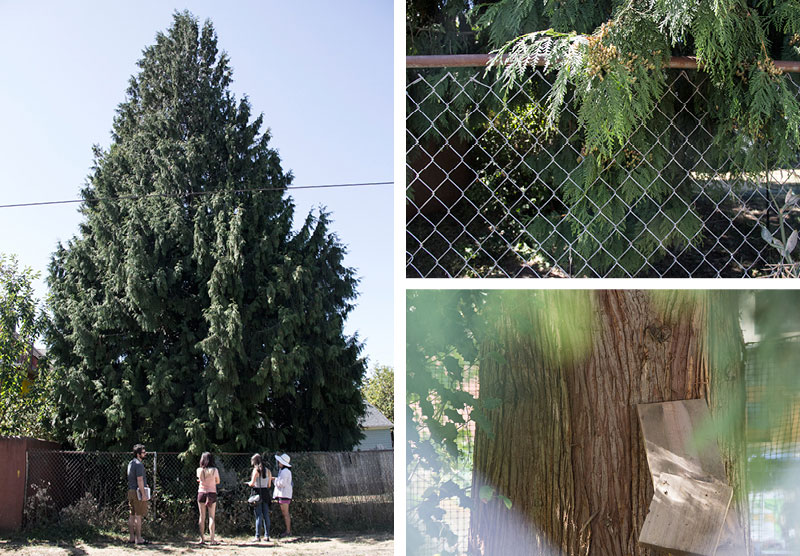
Western Red Cedar: edible needles, often used medicinally.

(left to right, up to down)
Sweet Asylum: part of the mustard family, edible flowers and leaves
Mustard Seeds: edible seeds
Rose: edible flowers
Yucca: edible flower petals
Mallow: edible plant
Mallow ‘cheesewheel’ fruit: part of the mallow plant – tastes like a tiny squash
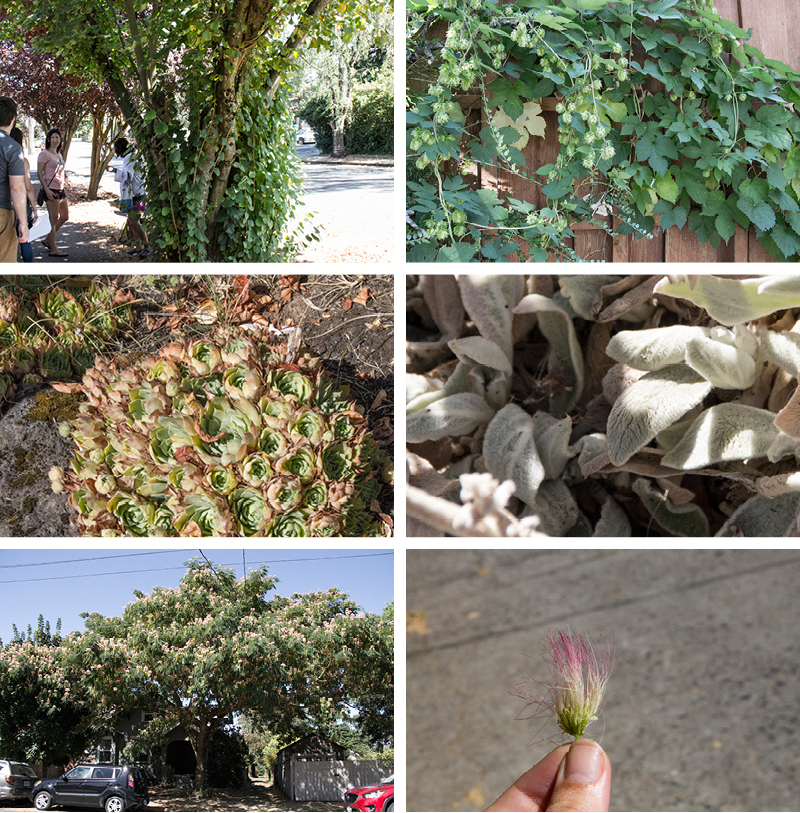
(left to right, up to down)
Hazelnut Tree: Edible nuts and common in Oregon
Hops: Flower is edible. Used as stability agent and flavoring in beer.
Hens and Chicks: edible leaves
Lamb’s Ear: edible leaves
Mimosa Tree: edible flowers and bark (medicinal – blood circulation)
Mimosa Flower: sweet tasting, wilts quickly. We would love to use this as an ingredient, but it appeared as if it would last less than 5 minutes from plucking to plate. Maybe if there was an outdoor restaurant with a Mimosa tree in the courtyard?
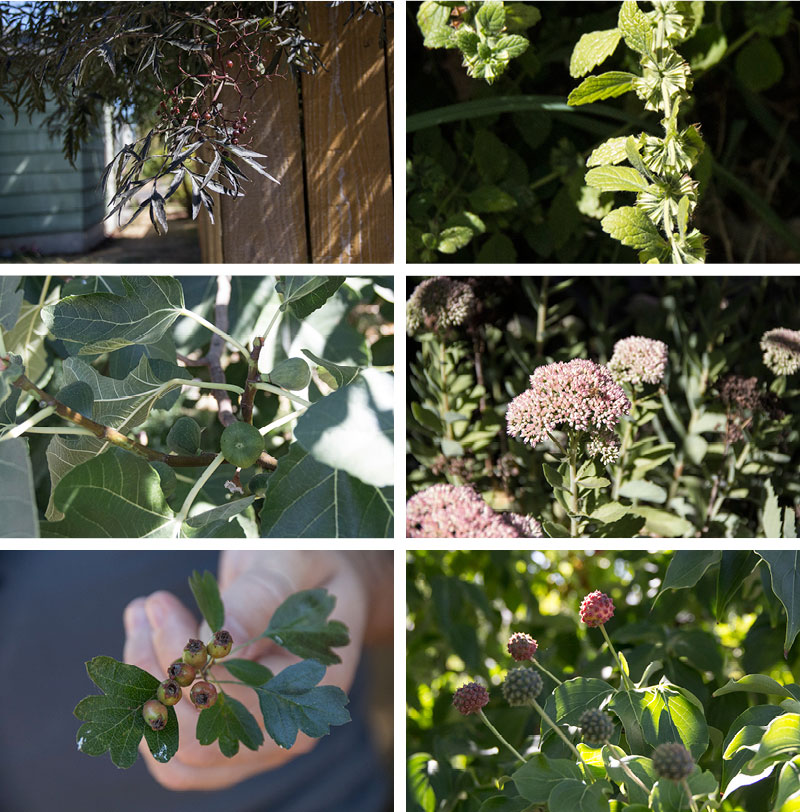
(left to right, up to down)
Black Elderberry: edible berries and flowers
Lemon Balm: edible leaves
Figs: edible fruit
Live-Forever: edible leaves
Hawthorn: Fruits and leaves are edible
Kousa Dogwood: edible fruit – when ripe, these spiky red lollipops are sweet like mangoes! They are currently all over Portland.
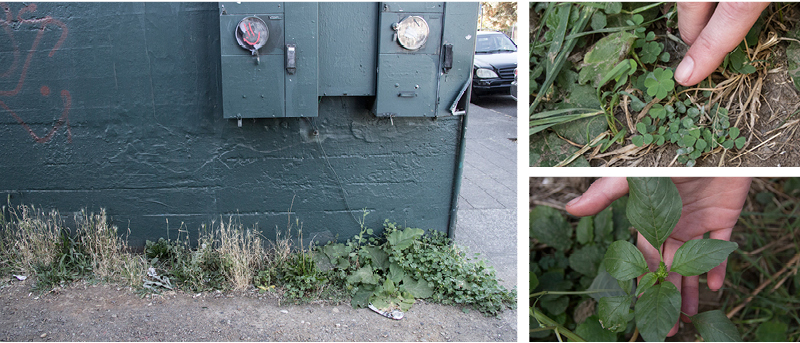
Here is an example of where we walked. In a small alleyway just off of Alberta, Becky showed us at least four different edibles sprouting up as weeds all over the place.
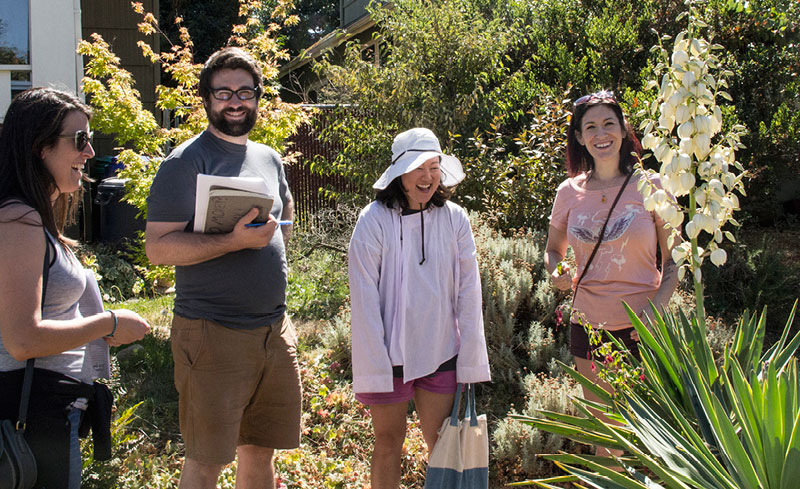
Happy foragers around the yucca plant at the end of the tour. Thanks to Heather K. Julius for arranging it for us, and Becky Lerner for sharing all of her knowledge.